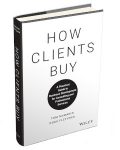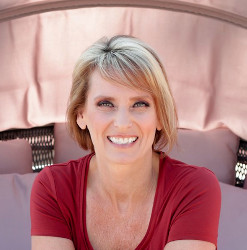Posted by Elena del Valle on September 9, 2019

Katherine Eban, author, Bottle of Lies
Photo: Roberto Falck
A podcast interview with Katherine Eban, author, Bottle of Lies (see Investigative journalist reveals troubling side of generic drugs) is available in the Podcast Section of Hispanic Marketing and Public Relations, HispanicMPR.com. During the podcast, she discusses her book with Elena del Valle, host of the HispanicMPR.com podcast.
Katherine Eban is a Fortune magazine contributor, and has also written for Vanity Fair, Self, and The Nation. She is the author of Dangerous Doses: A True Story of Cops, Counterfeiters and the Contamination of America’s Drug Supply. She formerly worked as a staff writer for The New York Times and the New York Observer. Educated at Brown University and Oxford, where she was a Rhodes Scholar, she lives in Brooklyn with her husband and two daughters.
To listen to the interview, scroll down until you see “Podcast” on the right hand side, then select “HMPR Katherine Eban” and click on the play button below or download the MP3 file to your iPod or MP3 player to listen on the go, in your car or at home from the RSS feed. Some software will not allow flash, which may be necessary for the play button and podcast player. If that is your case, you will need to download the file to play it. To download it, click on the arrow of the recording you wish to copy and save it to disk. The podcast will remain listed in the September 2019 section of the podcast archive.

Click to buy Bottle of Lies
Posted by Elena del Valle on August 26, 2019

Rana Adib, executive secretary, Ren21
Photo: Ren21
A podcast interview with Rana Adib, executive secretary, Ren21 is available in the Podcast Section of Hispanic Marketing and Public Relations, HispanicMPR.com. During the podcast, she discusses sustainable energy with Elena del Valle, host of the HispanicMPR.com podcast.
Previously, Rana was Ren21’s research coordinator developing the international expert community and leading the Ren21 Renewables Global Status Report series to become an international reference. Prior to Ren21 Rana worked in private industry and applied research in the areas of renewable energy, energy access, and waste management. She has over 20 years of experience in the energy sector.
To listen to the interview, scroll down until you see “Podcast” on the right hand side, then select “HMPR Rana Adib” and click on the play button below or download the MP3 file to your iPod or MP3 player to listen on the go, in your car or at home from the RSS feed. Some software will not allow flash, which may be necessary for the play button and podcast player. If that is your case, you will need to download the file to play it. To download it, click on the arrow of the recording you wish to copy and save it to disk. The podcast will remain listed in the August 2019 section of the podcast archive.
Posted by Elena del Valle on August 19, 2019

Tiffany Finck-Haynes, program manager, Friends of the Earth

Lisa Lindsley, capital markets advisor, SumOfUs
Photos: SumOfUs, Friends of the Earth
A podcast interview with Tiffany Finck-Haynes, program manager, Friends of the Earth, and Lisa Lindsley, capital markets advisor, SumOfUs, is available in the Podcast Section of Hispanic Marketing and Public Relations, HispanicMPR.com. During the podcast, they discusse bee health and pollinators with Elena del Valle, host of the HispanicMPR.com podcast.
Tiffany leads the organization’s work to eliminate toxic pesticides and advance a sustainable and just food system to protect people, pollinators and the planet. She leads federal, state, local policy and marketplace campaigns aimed at reforming industrial agriculture. Prior to joining Friends of the Earth, she worked as a community health organizer at Many Languages One Voice, running campaigns to improve equitable access to affordable, culturally and linguistically appropriate health-related information, services, and care for nail salon workers and day laborers.
After getting her start on Wall Street, Lisa’s 33-year career in finance has taken her from the microfinance industry to the United States labor movement. She has lived in Brazil, Argentina and Mexico and is fluent in Spanish and Portuguese. Prior to joining SumOfUs, Lisa was director, Capital Strategies American Federation of State County and Municipal Employees (AFSCME). She led the effort to remove Jamie Dimon as the board chair of JPMorgan Chase, helped pass the Dodd-Frank Act, and pioneered shareholder initiatives around American Legislative Exchange Council (ALEC) and human rights. Lisa left her position as a managing director, Latin American Corporate Finance Division, Bear Stearns in 1995 to enter the microfinance field.
To listen to the interview, scroll down until you see “Podcast” on the right hand side, then select “HMPR Tiffany Finck-Haynes, Lisa Lindsley” and click on the play button below or download the MP3 file to your iPod or MP3 player to listen on the go, in your car or at home from the RSS feed. Some software will not allow flash, which may be necessary for the play button and podcast player. If that is your case, you will need to download the file to play it. To download it, click on the arrow of the recording you wish to copy and save it to disk. The podcast will remain listed in the August 2019 section of the podcast archive.
Posted by Elena del Valle on August 12, 2019

Bottle of Lies
Photos: Ecco, Roberto Falck
Investigative journalist Katherine Eban dedicated 10 years of her life to researching and writing about the generic drug industry boom in the United States. Along the way she read official documents, spoke with whistleblowers, lawyers and government employees, uncovering disturbing truths about the quality and trustworthiness of the drugs that many would prefer remain in the dark. This year her findings became available to the public in Bottle of Lies The Inside Story of the Generic Drug Boom (Ecco, $28.99). There is also an audio edition narrated by Eban. A paperback edition is due May 2020.
The 482-page non fiction book is easy to read and engaging, more like a novel than a non-fiction expose. It outlines the events that led to the blossoming of a huge generic drug industry in the United States and the myriad problems she uncovered. It is divided into 28 chapters and seven main parts: Shifting Ground, India Rises, A Cat-and-Mouse Business, Making A Case, Detectives in the Dark, The Watershed, and Reckonings.
“The book is entirely non-fiction, Eban said by email. “Every detail in the book is supported by documentation, interviews, or source recollections, and no names have been changed.”
When asked about her personal motivator, she replied, “My reporting on the generic drug industry actually began a decade ago, when I was contacted by the host of an NPR radio show, The People’s Pharmacy. The host, Joe Graedon, said that patients were contacting him with complaints about side effects from their generic drugs. He suggested I look into the question of what is wrong with the drugs. It quickly became apparent to me that just documenting patient concerns would not get me very far in answering that question. I realized the answers most likely lay in the manufacturing plants and boardrooms of the companies making our drugs – which meant in India and China.
My effort to answer that original question — What is wrong with the drugs? — turned into a global mystery that kept me reporting and digging.”

Katherine Eban, author, Bottle of Lies
The primary target audience for the book? “Anyone and everyone, the author said. “The story is real-life global thriller with big money and life-and-death consequences at its core. Anyone who enjoys a page-turning detective story, who wants to learn about the dark side of globalization, or who takes any medicine at all, is the ideal reader.”
About the book project overall the author said, “The biggest challenge was: how was I, as an independent U.S.-based journalist — without a newsroom, a team of colleagues, or other resources at my disposal — going to be able to penetrate an industry, and companies, that were based on another continent? The difficulties of a global investigative project were unrelenting.
The most rewarding was finally being able to get real insight into those distant manufacturing plants, and to convey that to readers. The reaction has been immense. I am flooded with emails from grateful readers, almost all of whom are consumers of generic drugs. They feel enlightened by the book.”
Eban said that since the book came out, she has been contacted by Congressional committees, interested in investigating the problems she raised. One measure of success, the author said, would be to help fix the problems her book exposes.

Click to buy Bottle of Lies
Posted by Elena del Valle on August 5, 2019

Shital Mars, CEO, Progressive Care
Photo: Progressive Care
A podcast interview with Shital Mars, CEO, Progressive Care is available in the Podcast Section of Hispanic Marketing and Public Relations, HispanicMPR.com. During the podcast, she discusses chronic pain, substance abuse, opioid dependency and alternative pain management with Elena del Valle, host of the HispanicMPR.com podcast.
According to promotional materials, Shital has guided Progressive Care and its wholly-owned subsidiary PharmCo LLC on a rapid growth trajectory with the signing of an investment deal; and she has focused on creating and implementing systems that improve patient adherence and provide risk management practices for physicians and providers. She spearheaded Progressive Care’s new campaign focused on pain management alternatives to opioids.
To listen to the interview, scroll down until you see “Podcast” on the right hand side, then select “HMPR Shital Mars” and click on the play button below or download the MP3 file to your iPod or MP3 player to listen on the go, in your car or at home from the RSS feed. Some software will not allow flash, which may be necessary for the play button and podcast player. If that is your case, you will need to download the file to play it. To download it, click on the arrow of the recording you wish to copy and save it to disk. The podcast will remain listed in the August 2019 section of the podcast archive.
Posted by Elena del Valle on July 22, 2019

Todd Caponi, author, The Transparency Sale
Photo: Todd Caponi
A podcast interview with Todd Caponi, author, The Transparency Sale How Unexpected Honesty and Understanding the Buying Brain Can Transform Your Results (see Sales specialist touts importance of transparency) is available in the Podcast Section of Hispanic Marketing and Public Relations, HispanicMPR.com. During the podcast, he discusses his book with Elena del Valle, host of the HispanicMPR.com podcast.
Todd is also a keynote speaker, workshop leader and trainer as well as principal and founder of Sales Melon.
To listen to the interview, scroll down until you see “Podcast” on the right hand side, then select “HMPR Todd Caponi” and click on the play button below or download the MP3 file to your iPod or MP3 player to listen on the go, in your car or at home from the RSS feed. Some software will not allow flash, which may be necessary for the play button and podcast player. If that is your case, you will need to download the file to play it. To download it, click on the arrow of the recording you wish to copy and save it to disk. The podcast will remain listed in the July 2019 section of the podcast archive.
Posted by Elena del Valle on July 15, 2019

Photo, video: Discovery en Espanol
For viewers curious about the life and heirs of Pablo Escobar, thought to have been one of the most infamous and wealthiest criminals of the 1980s and 1990s, Discovery en Español presented a two hour documentary (the screener was 45 minutes long) in Spanish about his wife, Maria Isabel Santos. The program aired at 9 p.m. Eastern and Pacific time July 14, 2019 and should be available through the network’s GO app beginning today. Scroll down to watch a trailer in Spanish.
Known as La Tata she was born Victoria Henao Escobar. Twenty-five years after Escobar’s death she broke her self imposed silence for the Telegramme Media documentary, a Canadian project. The film was produced by Eric Hebert and Quebecor in 2018.
Narrated in the first person by La Tata the film features archival photos, family home video and newsreel segments. She revisits locations of significance to her past such as Monaco, the building where she and her husband lived in a penthouse suite, and the home in Panama City, Panama where she gave birth to her daughter. She explains that her husband, more than a decade her senior, began pursuing her romantically when she was only 13.
Posted by Elena del Valle on July 11, 2019

How Clients Buy
Photos: Carlie Auger
Convinced that selling professional services is different from selling products Tom McMakin and Doug Fletcher dedicated a year to writing and publishing How Clients Buy A Practical Guide to Business Development for Consulting and Professional Services (Wiley, $29), a guide to business development for expert services such as accountants, lawyers, human resources consultants and strategy advisors.
“Wiley has done a nice job of supporting the book with online sellers and by offering rights overseas,” McMakin said by email when asked how they marketed the 262-page book. “Augmenting that, we launched a How Clients Buy website, distributed complementary copies to key influencers in the professional services industry, and placed books with airport booksellers.”

Doug Fletcher, co-author, How Clients Buy
“How Clients Buy was my first book, but hopefully not my last,” Fletcher said by email when asked about the book. “It’s been a wonderful experience. One of the highlights of my professional career.”
The hardcover book, published in 2018, is divided into 19 chapters and four main sections: The Problem, Obstacles, How Clients Buy and Putting the Seven Elements to Work.
“Doug and I believe that high end, highly customized expert services are sold to clients in very different ways than, say, an iPhone, which is sold on features, attributes, and price,” McMakin said. “Indeed, it is not even useful to think about selling services. A better paradigm is to think about ‘how clients buy.’ We concluded that most clients engage with would-be consultants by way of relationships, referrals, and reputation. The question that fascinated us, both solo practitioners and members of large consulting firms, is how one systematically drives those three R’s.”
“The trend toward fewer companies (which are larger and able to serve global markets) is fueling double-digit growth in the $1.7 trillion global professional services market as companies seek to outsource (either nearshoring or offshoring) non-core functions,” McMaking said to a question about how the offshoring of professional services jobs and the reduction in the number of publicly traded companies impact professional services in the United States. “Large companies face two challenges: they need to compete in a global war for top talent, and they need to remain agile to be able to pivot strategically as disruptive forces undermine markets and business models. By hiring just-in-time senior leadership in the form of a consulting or advisory contract, companies can sustain and build competitive advantage in a fast-moving, ever-changing marketplace.
The future for those who offer specialized insight born of sector specific experience is strong. In the course of our research, we were told by rainmakers that expert service practice areas are growing more global even as they are becoming more focused. A company no longer hires a local accountant to do all their work, but instead hires different accountants, who may be geographically disbursed to help them solve specific problems where they have world-class domain expertise.”

Tom McMakin, co-author, How Clients Buy
Marketers describe Generation Z as the most diverse generation in our country’s history. When asked in what ways, if any, they anticipate this will affect how and what clients buy, McMakin replied, “Just like the country is becoming more diverse, so too is the world of expert services. To succeed, professional service firms need to shrink the pond and narrowcast to specific groups of people where their experience and expertise most applies. This can be a step-up for bands of experts who might have found themselves left out of the corporate mainstream in the past. Not only can they speak to the advantage inherent to their diverse backgrounds – think consultants who rolled out of the Kenyan banking sector advising multinationals on east African trade – but true expertise, informed by a long set of relevant experiences and thoughtful reflection – floats free of the kind of constraints that have hindered diverse professionals in the past. At the same time, increased diversity in large companies is driving a thirst for more diverse input into those companies opening the door to groups of consultants with different and valuable points of view.”
Fletcher said, “With regard to Gen Z – one other point we make in the book is how clients buy today vs. how they might buy in the future. Today, generally speaking, decision makers in larger organizations are not Gen Z – or millennials. Today’s clients still prefer to hire people that they know, respect and trust or who come highly recommended by a colleague. Tomorrow’s leaders may be more willing to buy expert services more digitally – using online reviews, Skype, Zoom, and other digitally formed relationships. It’s hard to say. With today’s large expert services projects – often in the hundreds of ‘000s or millions $, these are purchased typically after long, face to face relationships are established. How clients buy ten or twenty years from now may be very different?”
McMakin is chief executive officer and partner of Profitable Ideas Exchange (PIE). Before joining PIE, he was a co-founder and managing director with Orchard Holdings Group, a private equity firm based in Cincinnati, Ohio.
Fletcher splits his time between teaching at Montana State University’s Jake Jabs, and speaking, writing, and coaching about business development in professional services and consulting. He serves on the board of directors of The Beacon Group in Portland, Maine.

Click to buy How Clients Buy
Comments:
Filed Under: Books
Posted by Elena del Valle on June 24, 2019

Jennifer Marcenelle, CEO, Burn Bright Today
Photo: Jennifer Marcenelle
A podcast interview with holistic nurse Jennifer Marcenelle, CEO, Burn Bright Today is available in the Podcast Section of Hispanic Marketing and Public Relations, HispanicMPR.com. During the podcast, she discusses gemstone therapy to combat burnout with Elena del Valle, host of the HispanicMPR.com podcast.
She the founder Burn Bright Today. Jennifer, a Board-Certified holistic nurse with over 30 years of experience in the medical industry, also has the following M.B.A., B.S.N., R.N., H.B.C.-H.N. credentials to her name. She is a certified Gemstone and Diamond Therapy Associate Practitioner. When she was 44, she had a health crisis and near suicide from burnout. Following those experiences she has dedicated her career to helping people move from Burning Out to Burning Bright.
To listen to the interview, scroll down until you see “Podcast” on the right hand side, then select “HMPR Jennifer Marcenelle” and click on the play button below or download the MP3 file to your iPod or MP3 player to listen on the go, in your car or at home from the RSS feed. Some software will not allow flash, which may be necessary for the play button and podcast player. If that is your case, you will need to download the file to play it. To download it, click on the arrow of the recording you wish to copy and save it to disk. The podcast will remain listed in the June 2019 section of the podcast archive.























